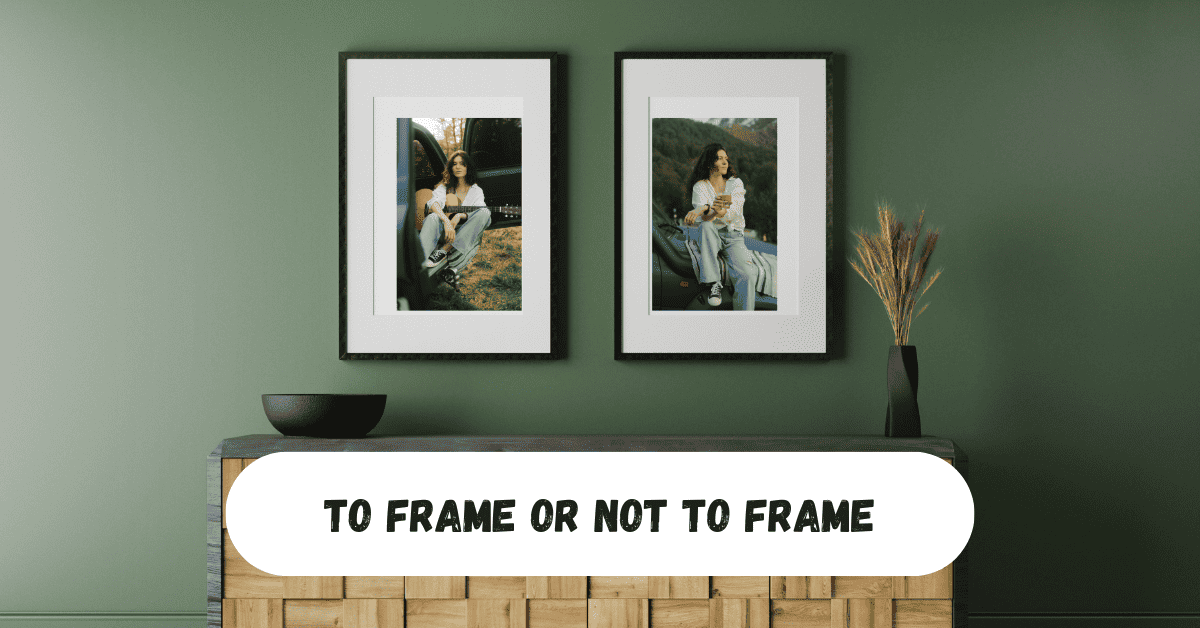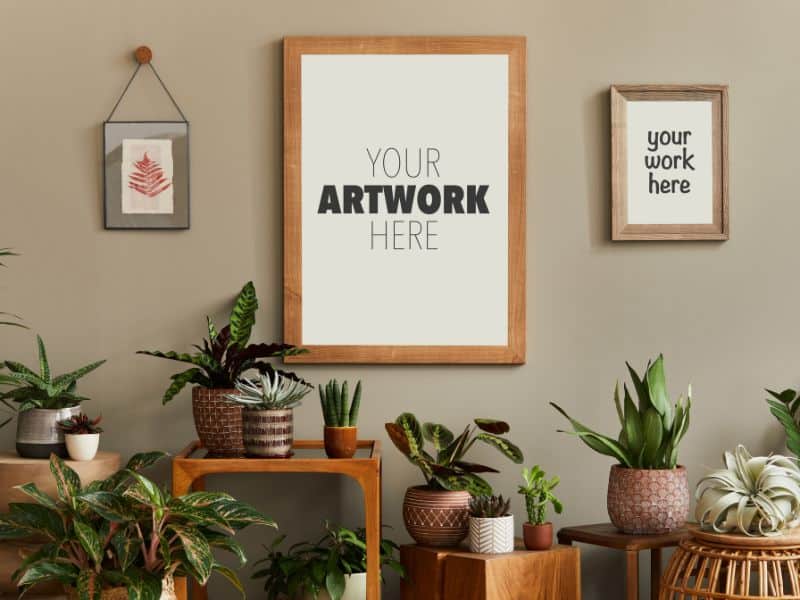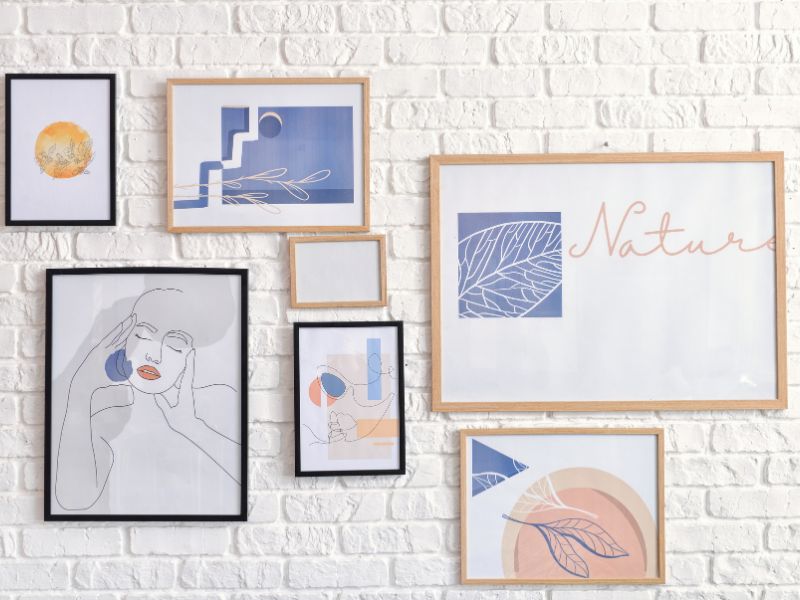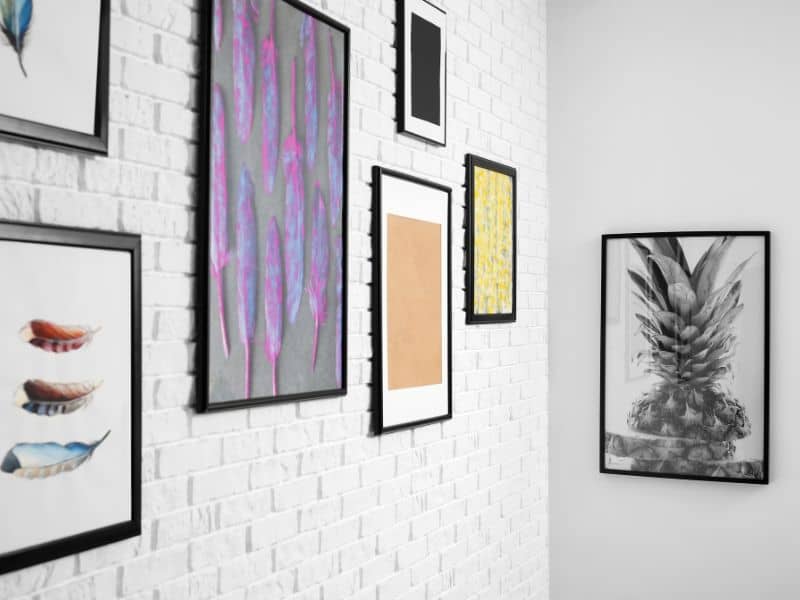To Frame or Not to Frame

Wall hangings are cool. They enhance your décor and space. Whether to frame or not to frame your wall hangings depends on your preference alongside several factors. Some of them include the style of the artwork, size, and your home itself. A formal home or a traditional one looks nice with framed artwork. Unframe your artwork if you live in a contemporary home.
Framing serves many purposes, including decoration, enhancing and protecting the painting, and providing a finished look. Choosing a perfect, inexpensive artwork for your space is not always easy. However, when you find one, you have to decide whether or not to frame it.
Purpose of Framing
Framing your wall art serves many purposes, including preserving it for many years by protecting it from elements that would otherwise warp or damage the artwork. It is also decorative. The frame can add color to your art prints, create a focal point and define a space. Framed prints make wall art quite enjoyable to look at and more valuable than unframed art prints. You can add a little more warmth and coziness to your space by simply framing the art you own. Protect the art you care about to ensure its condition for years to come.

Important Factors to Consider When Framing the Artwork
Consider the following factors when framing your canvas or paper prints for better results. These will help you choose a proper framing with which you can protect your valuable art pieces.
Artwork Medium
The type of material is a vital factor when deciding whether or not to frame wall art. For instance, paper artwork like a drawing, original prints, giclee prints, photo prints, and watercolors need a frame to prevent damage. For these materials, a metal or wood frame is excellent for the artwork. Ensure it has proper sealing so moisture does not find its way inside the frame and damage the print.
Canvas artwork, on the other hand, includes oil paints and more. These art pieces are more durable compared to paper artwork, but despite this, they also need a frame sometimes. The best choice of frame would be a wood or metal one. It also requires proper sealing to prevent moisture from getting inside and destroying the artwork. Dry-mounted canvas prints can be framed, or you can choose not to. Our dry-mounted prints have a standard frame choice of dark, maple, or weathered wood. Finally, dye sublimation metal prints do not require framing as they are ready to hang.

Size and Scale
The scale and size of wall prints determine whether or not they need framing. For example, large and medium prints need it because they are more susceptible to damage. Framing, therefore, protects them from moisture, dust, and dirt. The frame also gives the visual impression that the print is finished and polished.
You do not necessarily have to frame small artwork, although they can benefit when framed as well. Framed gallerists are eye-catching and more prominent. When it comes to the print scale, if it is of the same scale as the wall, you do not have to frame it. Frames make prints look visually appealing and have balanced proportions.

Art Framing Standards
These standards must be adhered to to ensure your framing gives the print a professional finish. However, the standards differ depending on the type of wall art.
Paper Prints
You must follow a few vital standards when framing paper prints to ensure they are well-preserved and protected. First, make sure you get a frame of the same size or slightly larger than your print to allow for a mat. Framing under glass will prevent the image from being damaged from the edges. Having a sturdy frame also ensures you have durable material that can withstand the elements.
The most appropriate materials for framing perishable paper prints are wood or metal. These materials are known to be durable against the elements. Wood, for instance, is resistant to moisture that would lead to decay, while metal is highly resistant to damage. They all prevent paper prints from fading and damaging.
Ensure you use a sealed frame, as this prevents moisture from seeping in and causing the artwork to fade or get damaged. On the same breath, the mat you choose must be slightly larger than the print to allow for a border that makes it look more professional. Ensure the glass is UV protective since the sun’s UV rays can cause your art to fade. Finally, use an acid-free backboard. Doing this helps protect your paper painting from elements that could lead to yellowing with time.
Canvas Prints
Canvas prints also have a standard framing procedure that you need to ensure. First, prepare the canvas print by cleaning and stretching the canvas. You could also add a backing on the stretched canvas. Select a suitable frame that is of the right size for your print. Ensure its construction is of durable material.

Now, add a mat to enhance and make the print more professional. Doing this can add a border under the art and create a sense of depth, making it professional. Attach the print to the frame (it can be a metal or wood frame) using either nails, screws, or adhesives. After this, add glass or acrylic to protect your art from damage or dust settling on top, and seal the frame. Sealing prevents moisture from finding its way inside and damaging your wall art.
It is essential to choose the right frame depending on the style of your print. For example, a traditional print should go with a traditional frame. Also, consider your décor or room colors and patterns when choosing the framing you need for your canvas painting. Avoid one with many colors in a space characterized by neutral colors. To fully appreciate the canvas print, make sure you mount it in an easily visible location. Avoid mounting it behind furniture or objects.
See more: Canvas prints vs. framed prints
Should You Frame or Unframe?
As seen above, several factors determine whether or not to frame or unframe your wall art; these include print style, size, color and pattern of your space, and personal preferences. Framing has many benefits, including protecting your wall art from damage, as the frames help preserve the art from moisture, dirt, and even dust. They are also decorative and enhance the looks of your wall art. Finally, prints with frames look more professional and polished than unframed ones. Besides, they add value to the art print if you resell them.

On the other hand, you can choose not to frame your prints because of the cost. Framing also could be time-consuming, especially when you can’t find the appropriate frame for your art. It can also be difficult if you do it yourself without prior experience. The benefit of unframed wall hangings is that unframed art is quick and easy, even though it might not look more professional. It saves money, and sometimes, even if it may not add value to your space, it can make it look more modern.
Ultimately, there is no wrong or right answers as to whether to frame or not to frame. Choose what you deem fit, but be sure to pick the right approach based on the information outlined here.
NEWSLETTER
Sign up for the 365Canvas newsletter.
Get notified of the best personalisation ideas to surprise your loved ones on special occasions.